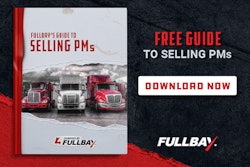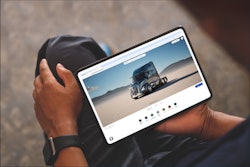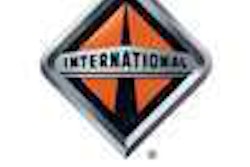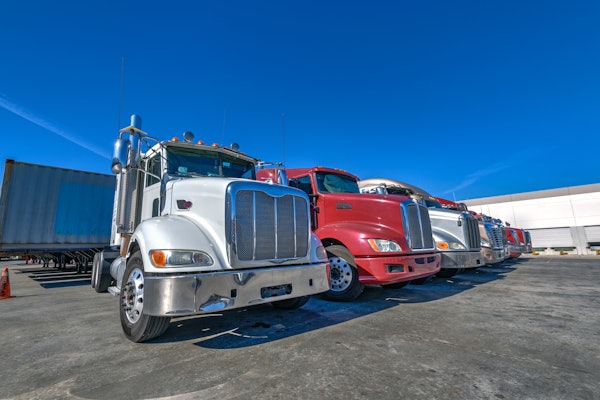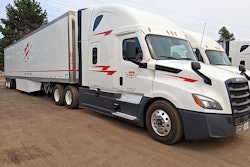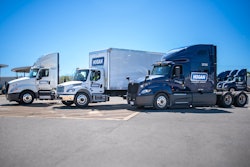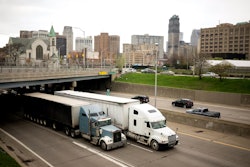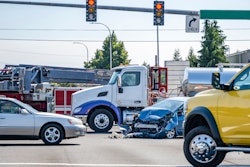Perkins Logistics
Noblesville, Ind.
Put a fresh spin on an existing practice by promoting its longstanding freight packing method as a way for customers to maximize trailer capacity and reduce carbon footprint.
Trucking companies today are discovering that lowering their carbon footprint – aka “going green” – not only makes a valuable impression in the eyes of the general public, it also leads to added business as a result of winning customers who also wish to score points for environmental awareness by choosing a green fleet.
In the case of Perkins Logistics – a long-haul and regional truckload carrier with 350 owner-operators and 900 trailers – the Noblesville, Ind.-based company discovered that it can have its cake and eat it, too, by using its longstanding packing methods to promote its ability to haul more freight per shipment and go green at the same time.
Perkins Logistics – which traces its origins to nearly a century ago when, in 1913, “Brownie” Perkins started using horses and wagons for local furniture deliveries – has long used its own blankets, straps, bars and plywood tiers to package bulk shipments to protect them without using crates. “We grew out of a furniture-hauling business model,” says Greg Maiers, chief operating officer.
The specialized packing method allows Perkins Logistics – which reports a compounded annual growth rate in excess of 20 percent over the last seven years, with sales exceeding $50 million last year – to fit an average of 65 percent more product into its trailers, reducing the number of loads needed and allowing shippers to haul more freight in fewer trips, Maiers says.
Moreover, the packing method eliminates cardboard waste, which has drawn growing interest from more shippers in today’s era of environmental consciousness, Maiers says. “Other the last few years, it’s become increasingly evident that because of all of the costs, this kind of shipping would be preferable for reducing their carbon footprint,” he says.
Put to the test
In the summer of 2007, one of Perkins Logistics’ largest customers – Haworth Inc., the world’s third-largest office furniture manufacturer, with sales of about $1.66 billion last year – asked it to undergo a test to quantify the environmental benefits of its packing methods. Perkins Logistics paid for the study and shared its results with Haworth.
“Packaging methods play a significant role in shipping efficiencies, but only after conducting a thorough investigation did we determine that a few fundamental changes in this area could also help reduce one element of the total carbon footprint of our products, taken over their useful lives,” says Henry Oosterhouse, Haworth’s global transportation manager.
Maria Swift – author of the study and director of program management and sustainability at Indianapolis research company Allegiant Global Services – says her group used data from the bills of lading of 100 shipments from September and October 2007 that were transported from Haworth’s factory in Bruce, Miss., to customers in 23 states. The products in one-third of the loads were packed and shipped using the “Perkins method,” while the products in the remaining shipments were boxed with cardboard.
The study showed that because Perkins Logistics was able to ship more pieces per truckload using its method, the company eliminated the need to make 11 truckload shipments during the study that would have emitted more than 27 metric tons of carbon dioxide. Taken over a year’s time, the reduction in CO2 emissions would be more than 283 metric tons – the equivalent of removing 52 passenger cars from the road for a year or emissions from heating 99 homes with natural gas, according to the study.
Shippers can see further reductions in CO2 emissions by eliminating cardboard, Swift says. “Perkins got reduction credits for not using cardboard because nobody had to make those boxes,” she says. Using statistics from the U.S. Environmental Protection Agency that state box manufacturers emit 1.52 metric tons of CO2 for every 2,000 pounds of containers they produce, Swift estimates that Perkins Logistics saved an additional 7.8 metric tons by using its reusable blankets.
Given the volume of shipments of these types of products in North America, specialized blanket wrapping easily could reduce thousands of tons of CO2 emissions annually, Maiers says. “We documented the results and have been actively promoting them,” he says.
Andy Card, Perkins Logistics president and chief executive officer, believes that if the Perkins method was used by more companies nationwide, the reduction in emissions in the United States could be staggering. “We were amazed at how shipping chairs and tables wrapped in protective blankets instead of cardboard containers could translate into such a sizable reduction in carbon dioxide emissions,” Card says.
Maiers says the Perkins method adds about 15 percent to the cost of a shipment because of the need for additional labor and reusable equipment, but the premium is more than offset by the increased number of items shipped per load and savings by the manufacturers from the elimination of cardboard and other packing materials. “The fewer trips more than make up for the added cost,” he says.
Oosterhouse says Haworth was pleased with the test results and is assessing more widespread use of the Perkins method. “While it took some added effort on our end, our customers said they appreciated avoiding the labor of unpacking boxes and disposing of cardboard waste,” he says.
Drawing interest
Maiers says the Perkins method isn’t suited for all products, but it works well for customers who are shipping larger, bulkier pieces such as furniture, telecommunications gear, office equipment such as large copiers, store fixtures, tradeshow exhibits, medical equipment and home cabinetry. “They’re good industries, and they would understand all of this,” he says.
Perkins Logistics also is examining other ways to reduce its carbon footprint, such as earning certification as an EPA SmartWay Transport Partner. To do so, Perkins first submitted proposed fuel-efficiency standards for its fleet for the next three years, which were assessed a SmartWay and corresponding Shipper Index Factor score; EPA approved both. The next step for Perkins Logistics is to submit an action plan for 2009 detailing its commitment to increasing fuel efficiency throughout its fleet over the next 18 months.
“We’ve heard from a number of companies,” Maiers says. “Many companies are interested in reducing their carbon footprint.”
Innovators profiles carriers and fleets that have found innovative ways to overcome trucking’s challenges.
If you know a carrier that has displayed innovation, contact Avery Vise at [email protected] or 800-633-5953.

